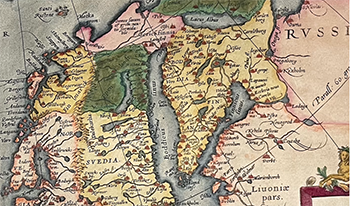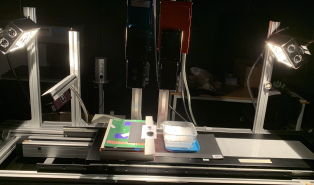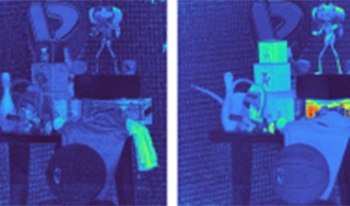
Hyperspectral imaging (HSI) has been widely used in the conservation studies of various cultural heritage (CH) objects, e.g., paintings, murals, and handwritten historical manuscripts. In this work, HSI is used to study painted historical maps, i.e., five maps of the Scandinavia region from the Ortelius collection preserved at the National Library of Norway in Oslo. Given knowledge of their colour application and usage, HSI-based pigment identification is performed, assuming several spectral mixing theories, i.e., pure pigments, subtractive, and additive mixing models. The obtained results are discussed, showing both the pure pigment and subtractive mixing model to be suitable for pigment identification in the case of watercolour applied on paper substrate.

The internal structure of the snow and its reflectance function play a major contribution in its appearance. We investigate the snow reflectance model introduced by Kokhanovsky and Zege in a close-range imaging scale. By monitoring the evolution of melting snow through time using hyperspectral cameras in a laboratory, we estimate snow grain sizes from 0.24 to 8.49 mm depending on the grain shape assumption chosen. Using our experimental results, we observe differences in the reconstructed reflectance spectra with the model regarding the spectra's shape or magnitude. Those variations may be due to our data or to the grain shape assumption of the model. We introduce an effective parameter describing both the snow grain size and the snow grain shape, to give us the opportunity to select the adapted assumption. The computational technique is ready, but more ground truths are required to validate the model.

When two hyperspectral cameras are sensitive to complementary portions of the electromagnetic spectrum it is fundamental that the calibration processes conducted independently lead to comparable radiance values, especially if the cameras show a shared spectral interval. However, in practice, a perfect matching is hard to obtain, and radiance values that are expected to be similar might differ significantly. In the present study we propose to introduce an ulterior linear correcting factor in the radiometric calibration pipeline of two hyperspectral cameras, operating in the visible near infrared (VNIR) and short wave infrared (SWIR) intervals. The linearity properties of both cameras are preliminarily assessed, conducting acquisitions on five standardized targets, and highlighting noise at the sensors level and different illumination fields as the main causes of radiance mismatch. The correction step that we propose allows the retrieval of accurate and smoothly connected VNIR-SWIR reflectance factor curves.

We demonstrate that a deep neural network can achieve near-perfect colour correction for the RGB signals from the sensors in a camera under a wide range of daylight illumination spectra. The network employs a fourth input signal representing the correlated colour temperature of the illumination. The network was trained entirely on synthetic spectra and applied to a set of RGB images derived from a hyperspectral image dataset under a range of daylight illumination with CCT from 2500K to 12500K. It produced an invariant output image as XYZ referenced to D65, with a mean colour error of approximately 1.0 ΔE*ab.